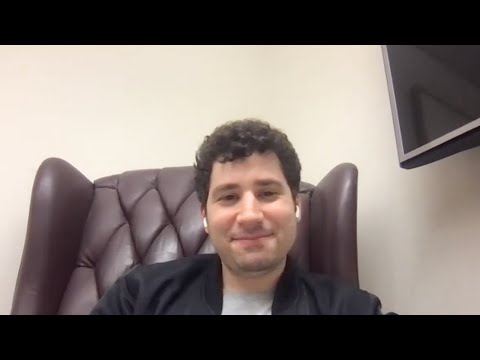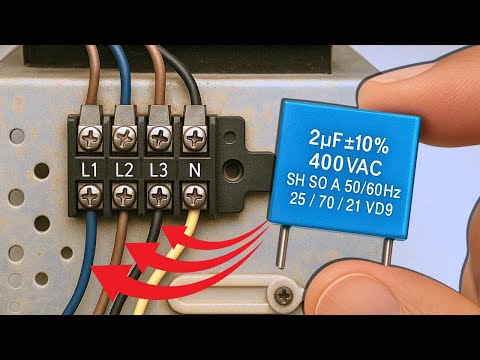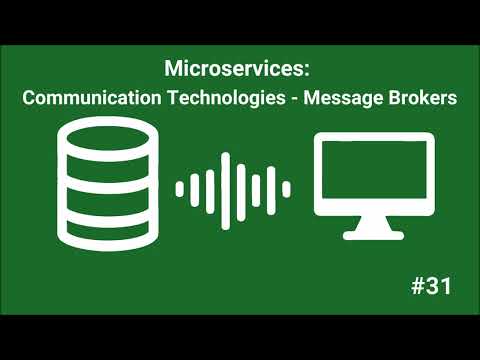CRISPR and Covid-19

Hello, and welcome to our second breakout session, CRISPR and Covid-19. I'm Julie Pryor, I'm the Communications Director at MIT's McGovern Institute for Brain Research, and I'll be your moderator for this session. Our speakers for tonight's session are MIT alums, Omar Abudayyeh and Jonathan Gootenberg. Both Omar and Jonathan conducted their PhD work in Feng Zhang's lab at the McGovern Institute, and the Broad Institute of MIT and Harvard. They are now inaugural fellows at the McGovern Institute, where they mine the biological world to develop revolutionary new CRISPR tools to both detect and treat human disease. Today, we will learn about their latest development, called STOPCovid, a potentially fast, cheap, and accurate test for Covid-19 that is based on CRISPR technology.
I've had the pleasure of working with Jonathan and Omar for the past several years, and I look forward to moderating this evening's event. Before we begin, I encourage our audience members to submit their questions to Jonathan and Omar using the Poll tab. The session is brief, and we'll do our best to answer as many of your questions as possible. So let's get right into it.
Jonathan and Omar, welcome. Covid-19. So last winter, a novel coronavirus swept the globe, and changed life as we knew it. At what point did you both realize that CRISPR might be a useful tool for this pandemic? Yeah, we've been working on CRISPR diagnostics for about four years now. And one of the amazing things about CRISPR is that it can be used actually as a diagnostic tool. So, and this may be redundant for some of those from the previous session, but we've been understanding different CRISPR enzymes.
And we've discovered several, such as Cas12 and Cas13, that actually allow us to detect DNA or RNA. So we have this technology called SHERLOCK, which is a very rapid, portable, sensitive, and specific technology, that can be used at point of care. And we've been applying it to many different diagnostic efforts, in bacteria, viral detection in dengue and Zika.
We've used it to detect cancer-associated mutations in cell-free DNA or genotype patients. So when these, kind of emerging reports were coming out, we had a technology that we felt was actually very well equipped to apply to this situation. I'm muted, sorry. (chuckles) Thank you for that background.
So how, in developing SHERLOCK, how did this enable you to rapidly shift to developing diagnostics for Covid? Yeah, so you know, back in kind of January when this was starting to spread in Asia, Jonathan and I, as well as Feng Zhang and another professor at MIT, were basically texting a lot about kind of developments happening in Asia, and were getting a lot of people starting to reach out to us trying to see if our sort of CRISPR diagnostic work from the past few years could maybe potentially help, as it was getting really bad. And so, you know, based on a number of people that reached out to us, we started trying to develop a test. And this is, you know, one of Feng's friends actually, that was in Wuhan. He's a scientist there, and he was in Wuhan during kind of the outbreak. And so we actually adopted a lot of our ongoing CRISPR detection work to develop a variety of genes in the SARS-CoV-2 genome.
And to our delight, we actually found, we could detect down to, you know, just a few copies of the virus per input. And it actually worked with our lateral flow-based systems. You could read it out with a paper strip, with very sort of rudimentary reagent, nothing that was too complicated, or would get a sort of experience as supply-chain issues that the more complicated PCR tests encountered. We actually released a white paper protocol that anyone could use, and shipped many kits all over the world to different researchers and hospitals to sort of, have people run these assays. And we even, you know, collaborated with a number of groups that found pretty good detection results.
This is actually a picture of the paper strip. So the top line, if it's sort of dark, that indicates positive detection. And if it's not, then it's negative.
And you can see the nice concordance with the qPCR result, for these different patient samples, which is pretty kind of exciting to see. So, and then of course, you know, a different version of technology that we actually had developed and licensed, actually got approved by the FDA, as well. So that was also kind of exciting to see, and this is actually the first kind of FDA authorized, sort of health care product involving CRISPR. So that's sort of been going out in the world, as well, to help kind of central labs test with these technologies. And I can say, working at the McGovern Institute how proud I am to know that you two have been working on this technology around the clock.
So let's get into it. How exactly does STOPCovid work? It looks a lot like a pregnancy test. So what's actually happening in there? Yeah, so the way that STOPCovid actually works is to get a little bit into the technical aspects, is that we're doing a couple of different reactions at the same time in a single tube. So normal CRISPR diagnostics, and many of the diagnostics, rapid diagnostics, that people are trying to use, use an amplification called LAMP, or an isothermal amplification. And what this means is this can amplify lots and lots of DNA from the SARS-CoV-2 genome, which can make it easier to attack.
So, this LAMP amplification only needs a single temperature, which makes it very easy compared to other tests. So if you're familiar with the more common PCR tests, those need to actually achieve a couple of different temperatures. And that means, you need much more complex instrumentation to run them. By operating at a single temperature, it means that we can actually run this reaction with much less complex hardware, or even, we've shown, with the sous vide machine. So the LAMP application can make a lot of this DNA, as you can see up at the top, but we need to actually be able to use our CRISPR diagnostics to detect it. And in a lot of the other SHERLOCK applications, what we're doing is we're doing an amplification, and we're actually moving that to a second tube, through our CRISPR diagnostics.
Which is not so difficult in a lab, but we don't want to have any sort of tube moving, or anything. Because if you're doing this in your own home, we don't want a normal person to have to pick up a pipette. Even though we love doing it, not everybody does. And for the FDA to authorize something for at-home use, it has to be as simple as possible. So one of the big questions was, how do we get that CRISPR detection into the same tube? And that actually comes down to this Cas12b enzyme.
So that's one of the many Cas12 enzymes that Omar and I discovered during our graduate work. It's actually a very specific Cas12b from a bacterium called Alicyclobacillus acidophilus. Wow. It's similar to orange juice, actually.
We didn't, thankfully, didn't have to get any spoiled orange juice ourselves off the DNA. But we can actually put this in the reaction, and it can take, operate the same temperature that LAMP reacts at, which is actually about, I think 95 degrees Fahrenheit, 60 degrees Celsius. So they're actually about 130 degrees Fahrenheit. So these all work together in the same tube. And this actually can then cut this reporter molecule, it has this famine biotin on it. And that, when we cut those apart, it allows us to actually detect them on a flow strip.
So, as part of the whole workflow, essentially, what you would do is, that you can take a swab, and actually dip it into a buffer. And we also put magnetic beads in that buffer, so those can actually bind the virus RNA, and actually concentrate it. This allows us to get a much higher sensitivity because we can actually concentrate all of the RNA that's on that swab into a single reaction. So we can just dip that in, and then take these beads, and take off the buffer.
In this case, we can use a pipette, but we can also basically dispose of that buffer, using a microfluidic system or other means. And then once you've disposed of that, we can add this reaction to the beads, and just put it at 60 degrees. And it will run for about 30 minutes to one hour, depending on how we want to read it out. And we can either detect it with a strip, as Julie said. So essentially these are the same strips that Omar mentioned, where we can do the readout, by making a dark red line. But we can also of course, use it with a fluorescence-based readout, which we find is much more rapid.
So we can use the fluorescence-based readout in about 30 minutes or less. So, it makes a very simple workflow that can easily be adapted to a simple instrument. And now we're working to actually convert this into a way that labs or other point of care places like businesses, pharmacies, could actually be able to use this with a simple inexpensive instrument. And we hope that it will allow for much broader testing, but with the actual sensitivity, comparable to gold standard qPCR tests. I'm going to ask you a bit about how this compares to those other tests that you mentioned. But I'd like it if you could just comment a bit on the value of, that you see anyway, of testing, of accurate, cheap testing.
You know, tell me what has driven you to do this? I mean, how do you think this will help the situation that we're in? Do you see this as a game changer? Yeah, I mean, I think, you know, one of the things we recognized early on, was that, you know PCR testing is really limited to central labs. And if you really want to sort of, reopen society, you need a way to test yourself in real time, basically. So, you know, if you want to test yourself in the morning and then go to work, or test yourself on every other day, so that you can basically go out to interact in society and prevent outbreaks before they occur, you need to distribute testing to everyone basically. And one of the big issues with the current reagents, is also the reagents are, you know, in short supply. So a big issue with the scale-up, has been getting enough of the PCR reagents, getting enough of the purification kits. And so we also realized if you're going to build something, you need to think about how to scale it to hundreds of millions of tests.
And so, you know, thinking through, like how do we take our simple chemistry and adapt it for that? It was kind of a no-brainer, because our chemistry is simple enough, such that the inputs can be scaled to that scale. And as Jonathan was just explaining, you know it's a pretty simplified format. And so, I think, we didn't talk too much about this, but I think the next sort of level is taking this workflow, that's shown on this slide, and automating it even further for people. And that's something we've now been working on to put it on basically like a small device. So you literally can just swab yourself, and put it into a system that then runs this whole workflow, and just gives you a result 30 minutes later.
And that's kind of the next frontier of how we're trying to get this out as soon as possible. Absolutely I would imagine there's a lot of people wanting to travel for Thanksgiving, and would find a test like this to be really helpful. You know before- I was hoping Yeah, I was hoping to have that product ready before winter break. So I could go home and visit my parents. I might not be able to do so. So we'll see. (chuckling)
Good, well I want to get into, sort of where you're at with with production and testing of this. But before we get there, just, can you talk a bit more about how this compares to other tests that are out there? What makes it different? And you know, how does it compare in terms of sensitivity and accuracy and all of that? Yeah, so I think the important thing is first, we have to compare it to the gold standard, which is not to say that it's the actual ground truth, but it's the best thing we have, which is qPCR. So incollaboration with a group at the University of Washington, they very graciously allowed us access to about 400 samples, 200 positives and 200 negatives. And what they did is that they took these 200 positive samples across a range of different, we call them CT values. But what this really means, is it's a range of different viral loads.
And one thing that's important about CT values for you to understand, is that a higher CT value stands for a cycle threshold. It deals with the amplification, but higher values mean you have less virus. So here, if you have a CT value of about 20, those are probably patients with very high viral load. And in the 35 to 40 range, that is essentially a very low load. And around 40 is essentially, basically the range of error of these machines. And what you can see is that this not only compares, these are all patients that we called as positive with both qPCR and STOPCovid.
Not only does it agree in that respect, it actually agrees in a quantitative way, as well, where the time that it took to detect the patient sample, actually correlated with how much virus there was. So this is a very neat thing that we found, but we found that essentially across this range of samples, there was a very strong coordinates, and it also depended on the CT value. So if you look at the concordance, based on the CT value on the next slide, what you see is that for many, I would say a vast majority of patients with CTs less than 37, we actually get perfect concordance with the qPCR results. When you go to a higher CT values, 38, 39, 40, we get less concordance. And these are patients of course, that are much less, they have a much lower viral load. And there is some evidence that they may not only be asymptomatic, but actually, not actually be infectious.
But one important thing to note, is that when we compare it to other tests, so these are a couple of other tests, that are on the market right now. Like the ID NOW, is a test from Abbott that was, I guess probably still is used at the White House, the very rapid test, or the Sufi GeneXpert. And these are very great tests, and they've been incredibly helpful in combating this pandemic, but they do make sacrifices of their sensitivity for their speed. So if you compare us at a CT range of less than 37, where we get 100% sensitivity, the ID NOW had only 65% sensitivity.
Moreover, the ID NOW can be done at point of care in a clear way fashion, like at the White House. But it's not simple enough to be something that could be done in the home. So we hope to have a test that is both simple enough so anyone can run it, and be done very easily, but also have the sensitivity that is on par with these gold standard tests.
And that's really where we're aiming. One other thing, this isn't on this slide, but of course the price of the machine that it takes to run these and the consumables, and the ID NOW is you need, basically, I think it's an $8,000 box. The Sufi GeneXpert is I think, in the $15,000 range.
Because the STOPCovid device, is what we show basically, can run it with a heat blocker, or sous vide machine. We hope that eventual versions of the device would be much less expensive and allow to be scaled much faster. Great. This sounds very promising. So where are you at, in terms of FDA approval? Or when can I take your test, or our viewers? (chuckles) (chuckles) It's a great question.
Yeah I mean, you know, we've been working very hard with an outside group to basically turn this into a very simple device. It kind of looks like an Apple HomePod. It's about the size of like a Sonos speaker, or actually a HomePod. And it's, you know, basically like I was explaining earlier, an automated way to get your sample from a nasal swab to a result. And you know, our goal is to hopefully have this sort of through the FDA by January, February for authorization. And then we already have all the manufacturing and sort of supply agreements in place to hopefully scale this to hundreds of thousands of tests, and eventually hopefully, a million tests per month by the summer.
So there's a lot of, there's actually a big group of people working on this, trying to make this a reality. And, you know, I think it's worth talking about this in the context of the vaccine. And that was my next question, Omar. (chuckles) Oh, that was your next question, okay. Well, I feel like I've gotten that question, so many times the past few days. (laughing)
I'm sure, I'm sure. So yeah, so just so everybody knows, I mean, right. So the headlines are, you know, there may be a vaccine around the corner, right? So, what does that mean for your test? Is there still, yeah I'll let you expand on that. Oh yeah, yeah. I mean, yeah, so it's actually kind of a cool, it's great, it's going to be very inspirational to the situation at McGovern because Moderna is across the street from us. That's one of the developers that released their vaccine data this week.
And Pfizer is on the other side of the building, also across the street. And so, I literally see Pfizer from our lab. And so I'm literally situated between both vaccine developers, and we can kind of sense it by the immense police presence that has now been guarding these buildings. But, but anyways, what's interesting, is even though the vaccines are coming out, I mean they're not going to roll out to probably the general public, until April, through the summer.
And then it's going to take, even until the end of the year to get out to, you know maybe a hundred million people, just because it takes a while to scale up. And even at that point, you know, probably 50% of the people will take it. So not everyone's going to actually have it. And so getting your immunity is going to take time.
So even if you get vaccinated, you're still going to need to wear masks. You're still going to have to get it tested every day. You know, and even beyond that, no one knows how long immunity will last.
So we definitely know it lasts for a few months, but will you still have immunity a year later? And because of those concerns, people will still probably want to be careful. You still want to have social distance. And if you get sick, you're going to wonder, do I have the flu? Do I have Covid? Or is it just a cold, right? That's still going to be a big question. People are still going to want a test. It's not going to go away, right. We have the flu vaccine, right.
And we have to get the flu vaccine every year. We still have to test for it every year. And you know, Covid might be a similar situation where you know, the vaccine might have to be seasonal, and people are still going to want to know what's going on with their health when they have a fever. And so, you know, we're, even though the vaccines are going to come out, we still foresee a big need, and we want to help with that need with this test.
That's great, and do you think that this test is adaptable for the next, I hate to say it, but the next virus to come around, or the next pandemic? I mean, do you, will you be able to to tweak it, so to speak? Yeah, that's one of the great things about the technologies that use nucleic acids to detect these different viruses, is that it was actually very rapidly that scientists all around the world were able to determine these sequences of the SARS-CoV-2 genome. And I have fullest confidence, that you know, if or when this next virus emerges, people will be able to detect it and get those sequences. And then it's as simple as being able to develop, essentially a set of complementary or matching DNA sequences and RNA sequences in STOPCovid. Another interesting thing is that we are actually detecting two different things in this test. We're detecting the presence of the virus, the SARS-CoV-2 virus. We're also checking the presence of human sample.
This is a positive control, because we need to be able to actually say, the swab was done correctly. This is what qPCR tests actually do, as well. And when you detect two things in a single reaction, it makes you start to think, maybe I could detect three. So what if we could also have a test that could detect flu? So when this flu season starts to pick up, and you have flu-like symptoms, you can say, "Well, how do I know if it's flu or Covid?" And you can know if it's, which one it is, or if it's either.
So that's a great advantage of these tests that just operate off of, you know, A's, T's, C's, and G's, in the case of RNAs, I guess you use T's. But it, we know how these rules work, and they're very easy to develop and to carry on. So yeah, we see these detection platforms as really a large basis for being able to sense and find infectious diseases that we currently know of, and what may be to come.
Fantastic. As always, Jonathan and Omar, I'm so inspired in speaking to you both and knowing that you're thinking about these really important things. We have run out of time. So I'd like to thank everyone for joining today.
I'd like to especially thank Jonathan and Omar for their valuable time and their expertise. And for more information about STOPCovid, you could visit their website, which is www.StopCovid.science. And if you'd like more info on Jonathan and Omar, you can visit our website, mcgovern.mit.edu.
I hope everyone stays safe, and thanks very much for joining us. And have a great evening. Thank you so much.
Yeah, thank you.
2020-12-18 20:48


